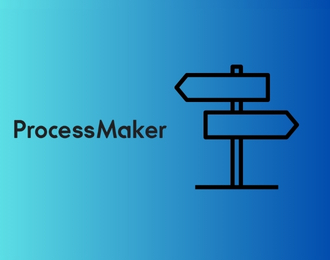What is Client Onboarding in Financial Services?
Client onboarding in financial services is the process of welcoming new clients by gathering necessary information, verifying their identity, and ensuring compliance with regulatory requirements. It sets the foundation for a strong client relationship by creating a smooth and transparent start.
For example, when a new client opens an investment account, the onboarding process involves collecting documents like ID proofs, performing KYC (Know Your Customer) checks, and explaining account features.
Without an effective onboarding process, delays and miscommunication can arise, leading to frustrated clients, compliance risks, and damaged trust, ultimately harming the organization's reputation and client retention.
Key Challenges of Customer Onboarding Processes in Financial Institutions
Customer onboarding in financial services is a critical but complex process that comes with several challenges, many of which stem from the need to balance regulatory compliance, risk management, and customer experience. One of the most significant challenges is regulatory complexity. Financial institutions must adhere to strict compliance standards such as KYC (Know Your Customer), AML (Anti-Money Laundering), GDPR, and local financial regulations. These rules vary by region and client type, requiring firms to implement flexible but robust compliance processes. Failure to comply can result in severe penalties, making regulatory alignment a top priority—but also a resource-intensive task.
Another key challenge is operational inefficiency caused by manual, fragmented processes. Traditional onboarding often involves siloed systems, redundant data entry, and excessive paperwork, leading to long turnaround times and a frustrating customer experience. These inefficiencies increase the risk of data entry errors, inconsistent records, and customer dissatisfaction. Integrating automation tools and centralized workflows is essential, but many institutions struggle with legacy systems that lack interoperability.
Data security and privacy concerns also present a major hurdle. Given the sensitive nature of personal and financial information collected during onboarding, institutions must implement strong security protocols. Ensuring end-to-end encryption, secure authentication, and data protection measures can be technically complex and costly, especially when supporting digital onboarding channels.
How to Automate the Client Onboarding Process in Financial Services
Automating the client onboarding process in financial services is a game-changer for efficiency, accuracy, and compliance. Traditional manual methods often result in delays, human errors, and inconsistent experiences for clients.
However, by leveraging automation tools like FlowForma Copilot, financial institutions can streamline the entire process from start to finish.
In this article, we’ll walk you through how to automate client onboarding with FlowForma, from uploading diagrams to refining workflows, creating dynamic questions, and building out fully functional forms—all in just a few clicks.
Get ready to transform your onboarding process in minutes!
-
With FlowForma Copilot, you can upload a flow diagram, existing form, or ask Copilot to build the proces, voice-to-text or chat.
-
For this demo, we have drawn a customer onboarding diagram.
-
Simply upload the process diagram and press Send.
-
Within seconds, Copilot returns a set of steps with descriptions of each step. We're now going to request some typical questions for each step.
-
Copilot returns a set of relevant questions for each step.
-
Copilot returns the correct question types and provides options for Choice questions.
-
It's easy to make changes. Let's add a Legal Documentation step after the Due Diligence step.
-
The Legal Documentation step has been added. When you are finished making changes to the process, click Build.
-
The steps and questions are created in FlowForma immediately.
-
You can expand out each step to view the questions, and can see a preview of the form on the right.
-
The correct question types are carried through to FlowForma.
-
Create a test form to see how your build is progressing.
-
We've gone from sketching out a flow to building out a prototype of that flow in FlowForma in a matter of minutes.
Best practices for client onboarding in financial services
1. Implement Digital KYC and AML Verification
Automating KYC (Know Your Customer) and AML (Anti-Money Laundering) verification is essential for accelerating the onboarding process while ensuring compliance. Financial institutions should integrate with digital identity verification providers that support biometric authentication, document scanning, and real-time database checks. This eliminates the need for manual checks, reduces human error, and ensures faster approval. Automating these checks also helps institutions remain compliant with local and international regulatory frameworks, mitigating the risk of onboarding high-risk or fraudulent clients.
2. Use Pre-Filled Smart Forms and eSignatures
Replacing traditional paper forms with dynamic, pre-filled smart forms greatly improves client experience and reduces onboarding time. These forms can automatically pull existing client information from integrated systems such as CRM or core banking platforms, minimizing manual data entry. Smart forms can adapt in real time based on user input, displaying only relevant fields. Combined with eSignature solutions, clients can complete the entire form and sign documents digitally without needing to print, scan, or visit a branch, enabling a truly paperless process.
3. Automate Document Collection and Validation
Financial services firms often require a wide array of documents during onboarding, such as proof of identity, proof of address, tax forms, and business credentials. By automating this process through secure digital portals, firms can streamline document submission and eliminate bottlenecks. Clients should be able to upload files easily, while the system automatically validates document type, format, and completeness. Automated workflows can also send timely reminders to clients for pending documents and notify internal teams once all required documents are received and verified.
4. Enable Omni-Channel Onboarding
Modern clients expect flexibility when interacting with financial institutions. Onboarding processes should be accessible through multiple channels such as mobile apps, websites, and in-person branches. More importantly, the experience should be seamless across these platforms—clients should be able to start onboarding in one channel and continue in another without losing progress. Ensuring consistent data flow and session continuity across all touchpoints significantly enhances user experience and reduces abandonment rates.
5. Standardize Workflows and Use Automation Rules
A standardized onboarding workflow ensures that each client is guided through a consistent, compliant process, reducing errors and operational overhead. Workflow automation tools allow firms to define rules based on client type, risk level, or region, automatically triggering the appropriate steps. For example, high-net-worth individuals may require additional due diligence, while corporate clients might need customized onboarding packages. Automation can assign tasks to specific departments, send templated communications, and manage approval hierarchies without manual intervention.
6. Ensure Regulatory and Data Compliance
Maintaining compliance with financial regulations such as GDPR, FINRA, and SEC guidelines is critical during onboarding. Automated compliance tools can screen clients against watchlists, sanctions lists, and politically exposed person (PEP) databases in real time. Additionally, onboarding systems should maintain encrypted audit trails, timestamped records, and secure document storage to support regulatory audits. Automation ensures that no critical compliance steps are skipped and that all client data is handled securely throughout the onboarding lifecycle.
7. Track Onboarding Metrics and Continuously Optimize
Financial institutions should closely monitor key performance indicators (KPIs) such as average onboarding time, drop-off rates, document completion time, and customer satisfaction. Analytics dashboards can provide visibility into where clients are experiencing friction, allowing continuous refinement of the process. Data-driven decisions help improve onboarding speed, reduce costs, and increase customer satisfaction. Regular process audits and A/B testing of onboarding flows can help institutions stay ahead of customer expectations and regulatory changes.
Conclusion
Client onboarding in financial services is the essential process of welcoming new clients, gathering information, verifying identities, and ensuring compliance with regulations. It forms the backbone of a strong client relationship and safeguards the organization's compliance obligations.
Automating this process with tools like FlowForma streamlines every step, from uploading process diagrams to building workflows and testing forms, making onboarding faster, more accurate, and highly efficient. Without automation, onboarding can become time-consuming and error-prone, leading to client frustration, compliance risks, and potential reputational damage.
To move forward, evaluate your current client onboarding workflow and identify manual bottlenecks that can be automated. Consider key compliance requirements and create a clear process map.
Automation will not only help you scale operations but also improve client satisfaction and reduce risks. Ensure your onboarding solution is adaptable, secure, and easy to refine as regulations and business needs evolve.
FlowForma’s no-code platform is designed to help financial services automate client onboarding seamlessly. From creating processes in minutes to ensuring compliance, FlowForma has you covered.
Experience the simplicity of automation—Book a demo today and elevate your client onboarding process!
.png) By
By 




